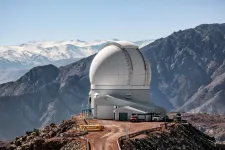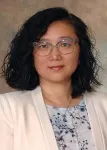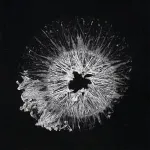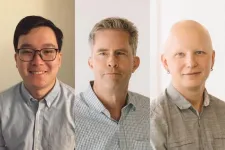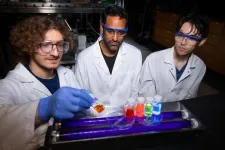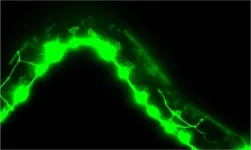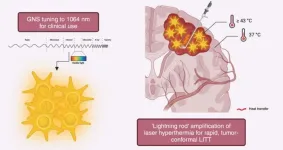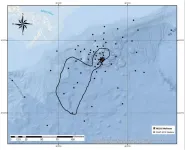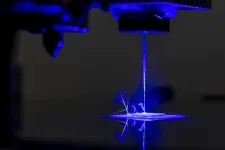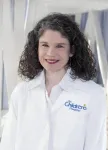(Press-News.org) Using an instrument on the 4.1-meter Southern Astrophysical Research Telescope, researchers obtained the first astronomical spectrum using skipper charge-coupled devices (CCDs).
The results were presented on June 16 at the Society of Photo-Optical Instrumentation Engineers Astronomical Telescopes + Instrumentation meeting in Japan by Edgar Marrufo Villalpando, a physics PhD candidate at the University of Chicago and a Fermilab DOE Graduate Instrumentation Research Award Fellow.
“This is a major milestone for skipper-CCD technology,” said Alex Drlica-Wagner, a cosmologist at the U.S. Department of Energy’s Fermi National Accelerator Laboratory who led the project. “It helps to retire the perceived risks for using this technology in the future, which is vitally important for future DOE cosmology projects.”
This is an important achievement for a project conceived and initiated through the Laboratory Directed Research and Development program at Fermilab in collaboration with NSF’s NOIRLab detector group. LDRD is a national program sponsored by the DOE that allows national laboratories to internally fund research and development projects that explore new ideas or concepts.
CCDs were invented in the United States in 1969, and forty years later scientists were awarded the Nobel Prize in Physics for their achievement. The devices are two-dimensional arrays of light-sensitive pixels that convert incoming photons into electrons. Conventional CCDs are the image sensors first used in digital cameras, and they remain the standard for many scientific imaging applications, such as astronomy, though their precision is limited by electronic noise.
Cosmologists seek to understand the mysterious natures of dark matter and dark energy by studying the distributions of stars and galaxies. To do this, they need advanced technology that can see fainter, more distant astronomical objects with as little noise as possible.
Existing CCD technology can make these measurements but take a long time or are less efficient. So, astrophysicists must either increase the signal — i.e., by investing more time on the world’s largest telescopes — or decrease the electronic noise.
Skipper CCDs were introduced in 1990 to reduce electronic noise to levels that allow the measurement of individual photons. They do this by taking multiple measurements of interesting pixels and skipping the rest. This strategy enables skipper CCDs to increase the precision of measurements in interesting regions of the image while reducing total readout time.
In 2017, scientists pioneered the use of skipper CCDs for dark matter experiments such as SENSEI and OSCURA, but today’s presentation showed the first time the technology was used to observe the night sky and collect astronomical data.
On March 31 and April 9, the researchers used skipper CCDs in the SOAR Integral Field Spectrograph to collect astronomical spectra from a galaxy cluster, two distant quasars, a galaxy with bright emission lines, and a star that is potentially associated with a dark-matter-dominated ultra-faint galaxy. In a first for astrophysical CCD observations, they achieved sub-electron readout noise and counted individual photons at optical wavelengths.
“What’s incredible is that these photons traveled to our detectors from objects billions of light-years away, and we could measure each one individually,” said Marrufo Villalpando.
Researchers are analyzing data from these first observations, and the next scheduled run for the skipper-CCD instrument on the SOAR Telescope is in July 2024.
“Many decades have passed since the skipper was born, so I was surprised to see the technology come to life again many decades later,” said Jim Janesick, inventor of the skipper CCD and a distinguished engineer at SRI International, a research institute based in California. “The noise results are amazing! I fell off my seat when I saw the very clean data.”
“Many decades have passed since the skipper was born, so I was surprised to see the technology come to life again,” said Jim Janesick, inventor of the skipper CCD and a distinguished engineer at SRI International, a research institute based in California. “The noise results are amazing! I fell off my seat when I saw the very clean sub-electron noise data.”
With the first successful demonstration of skipper-CCD technology for astrophysics, scientists are already working to improve it. The next generation of skipper CCDs, developed by Fermilab and Lawrence Berkeley National Laboratory, is 16 times faster than current devices. These new devices will greatly reduce readout time, and researchers have already begun testing them in the laboratory.
The next generation of skipper CCDs has been identified for use in future DOE cosmology efforts, such as the spectroscopic experiments DESI-II and Spec-S5, recommended by the recent U.S. particle physics planning process. In addition, NASA is considering skipper CCDs for the forthcoming Habitable Worlds Observatory that will attempt to detect earth-like planets around sun-like stars.
“I’m looking forward to seeing where these detectors might end up,” said Marrufo Villalpando, who joined the program in 2019. “People are using them for amazing things all over; their utility ranges from particle physics to cosmology. It’s a very versatile and useful technology.”
The project was a close collaboration between physicists, astronomers and engineers at Fermilab, UChicago, the National Science Foundation’s NOIRLab, DOE’s Lawrence Berkeley National Laboratory, and the National Astrophysical Laboratory of Brazil.
Fermi National Accelerator Laboratory is supported by the Office of Science of the U.S. Department of Energy. The Office of Science is the single largest supporter of basic research in the physical sciences in the United States and is working to address some of the most pressing challenges of our time. For more information, please visit science.energy.gov.
END
Revived technology used to count individual photons from distant galaxies
2024-06-24
ELSE PRESS RELEASES FROM THIS DATE:
U of T researchers develop RNA-targeting technology for precisely manipulating parts of human genes
2024-06-24
Researchers at the University of Toronto have harnessed a bacterial immune defense system, known as CRISPR, to efficiently and precisely control the process of RNA splicing.
The technology opens the door to new applications, including systematically interrogating the functions of parts of genes and correcting splicing deficiencies that underlie numerous diseases and disorders.
“Almost all human genes produce RNA transcripts that undergo the process of splicing, whereby coding segments, called exons, are joined together and non-coding segments, called introns, are removed and typically degraded,” said Jack Daiyang Li, first author on the study and PhD student ...
NexusXp™ – SLAS’s new interactive pavilion at SLAS2025 will showcase automation integration and collaboration
2024-06-24
Oak Brook, IL – The Society for Laboratory Automation and Screening (SLAS) will launch NexusXp, its new interactive pavilion at SLAS2025 to showcase collaborative and integrated lab automation scenarios. NexusXp combines Nexus, the Latin word for link or connection where multiple elements meet, with the modern “Xp” to signify the “Xperience” of making that critical link or connection. Through this new pavilion, SLAS will demonstrate how automation integration transforms research and enables scientific breakthroughs.
“NexusXp is an exclusive event or attendee ...
Engineers developing atom-thick material for efficient, ultrafast, light-based electronics
2024-06-24
AMES, Iowa – A Google Cloud video takes you inside a company data center in
southwest Iowa’s Council Bluffs.
There you are, in the middle of a long, industrial corridor. You slowly move past rack after rack after rack of the computer servers that are, Google says, “helping to keep the internet humming 24/7.”
Part of that hum is the power that keeps those data centers up and running.
“Think about when you use your computer,” said Matthew ...
Study reveals same genes that can drive cancer also guide neural-circuit growth
2024-06-24
LAWRENCE — Many people are familiar with oncogenes — genes long known to be involved in cancers in humans, such as the gene “Src.”
What’s less widely understood is that oncogenes didn’t evolve just to cause cancer in species, but rather to control events of normal growth and differentiation.
“As an organism grows from a single fertilized egg to form all the different tissue types, these oncogenes, including Src, evolved to control these normal events,” said Erik Lundquist, professor of molecular ...
Leveraging gold nanostars for precision laser interstitial thermal therapy
2024-06-24
“Gold nanostars amplify brain-tumor selective laser interstitial thermal therapy.”
BUFFALO, NY- June 24, 2024 – A new editorial paper was published in Oncotarget's Volume 15 on June 14, 2024, entitled, “Leveraging gold nanostars for precision laser interstitial thermal therapy.”
In this new editorial, researchers Aden P. Haskell-Mendoza, Ethan S. Srinivasan, Tuan Vo-Dinh and Peter E. Fecci from Duke University discuss laser interstitial thermal therapy (LITT). Over the past decade, LITT has become an important tool for the neurosurgical treatment of a variety of intracranial pathologies, including focal epilepsies, vascular malformations, and ...
Biodiversity loss from 2010 oil spill worse than predicted
2024-06-24
A new peer-reviewed study from researchers at The University of Texas at Arlington; the University of Nevada, Reno; Mokwon University in Daejeon, Korea; and Texas A&M University at Corpus Christi shows the Deepwater Horizon (DWH) oil spill of 2010 affected wildlife and their habitat much more than previously understood.
“Overall, we found the area of deep-sea floor affected by the DWH spill was significantly larger than previously thought,” said Masoud Rostami, an author of the study and assistant ...
New model shows more realistic picture of intimate partner violence
2024-06-24
ITHACA, N.Y. – Intimate partner violence is notoriously underreported and correctly diagnosed at hospitals only around a quarter of the time, but a new method provides a more realistic picture of who is most affected, even when cases go unrecorded.
PURPLE (Positive Unlabeled Relative PrevaLence Estimator), an algorithm developed by researchers at Cornell University, estimates how often underreported health conditions occur in different demographic groups. Using hospital data, the researchers showed that PURPLE can better quantify which groups of women are most likely to experience intimate partner violence compared with methods that ...
Damon Runyon announces inaugural class of SPARK Scholars
2024-06-24
The Damon Runyon Cancer Research Foundation has named the first cohort of the Damon Runyon Scholars Program for Advancing Research and Knowledge (SPARK), a one-year intensive cancer research internship program for post-baccalaureate students who come from varied backgrounds . The goal of the program is to provide young trainees who have the potential to become leaders in cancer research with rigorous scientific training and a network of mentors and peers to support their next steps into graduate school and beyond.
SPARK Scholars will conduct ...
No assembly required
2024-06-24
University of Missouri researchers have developed a way to create complex devices with multiple materials — including plastics, metals and semiconductors – all with a single machine.
The research, which was recently published in Nature Communications, outlines a novel 3D printing and laser process to manufacture multi-material, multi-layered sensors, circuit boards and even textiles with electronic components.
It’s called the Freeform Multi-material Assembly Process, and it promises to revolutionize ...
Circulating microRNAs likely as effective as A1C for predicting type 2 diabetes in youth, according to OU study
2024-06-24
Type 2 diabetes in young people ages 10 to19 has more than doubled in the past 20 years, yet it remains difficult for physicians to predict who will be diagnosed and who will improve with treatment. A newly published study from the University of Oklahoma shows that measuring the circulating abundance of microRNAs – which affect insulin-producing beta cells in the pancreas – is likely as effective as measuring the level of sugar in the blood for determining how a young person with the condition will fare.
Jeanie Tryggestad, M.D., an associate professor of pediatrics in the OU College of Medicine, led the study, which is published in The Journal of Clinical ...
